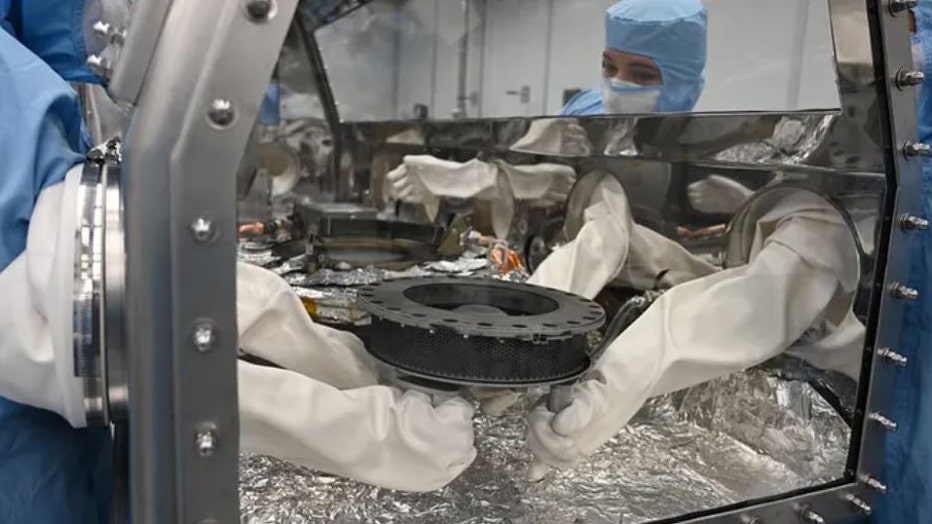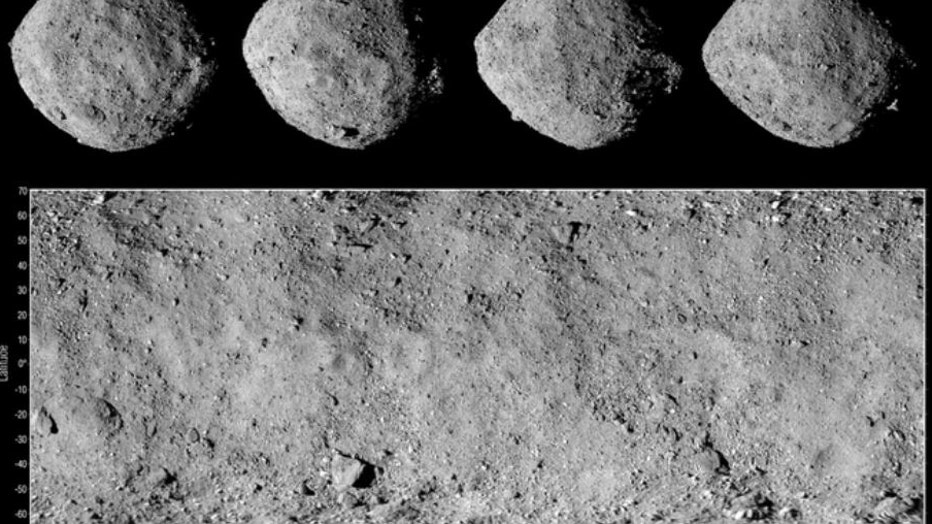See the asteroid sample a NASA spacecraft took 7 years to bring back to Earth

A top-down view of the OSIRIS-REx Touch-and-Go-Sample-Acquisition-Mechanism (TAGSAM) head with the lid removed, revealing the remainder of the asteroid sample inside. Erika Blumenfeld, creative lead for the Advanced Imaging and Visualization of Astro
HOUSTON - Imagine you're a scientist who waited over a decade to get your gloved hands on NASA's first sample of asteroid dirt – but the lid stands in your way.
The stubborn top of NASA's OSIRIS-REx asteroid sample canister is no longer holding up science after the curation team at Johnson Space Center in Houston successfully removed two fasteners preventing access to the full sample from asteroid Bennu.
In September, the capsule containing bits of dirt and rock from Bennu came blasting down to Earth, landing in Utah seven years after the OSIRIS-REx mission launched. The asteroid science team has been able to access some of the nearly 9-ounce sample but not its full contents. An early analysis shows that the asteroid sample contains carbon --essential for all life on Earth.

Astromaterials processor Mari Montoya and OSIRIS-REx curation team members set the TAGSAM (Touch and Go Sample Acquisition Mechanism) down in the canister glovebox after removing it from the canister base and flipping it over. (Credit: NASA) (NASA)
'TOUCHDOWN': NASA'S ASTEROID SAMPLE COMES BLASTING DOWN TO EARTH, LANDING IN UTAH
NASA said the astromaterials curation team at JSC successfully disassembled the OSIRIS-REx sampler head in January, revealing the full sample.
Feast your eyes on the otherworldly dirt above. The high-resolution photograph shows the sample head containing asteroid material.
To make sure every last piece of the asteroid is collected, the curation team will next remove the round metal collar and prepare a glovebox to transfer the sample into trays. The final mass of the sample will be determined in a few weeks, according to NASA.

This image shows four views of asteroid Bennu along with a corresponding global mosaic. The images were taken on Dec. 2, 2018, by the OSIRIS-REx spacecraft’s PolyCam camera. (Image: NASA/Goddard/University of Arizona) (NASA)
NASA SPACECRAFT TO CONVERGE WITH DEMON OF CHAOS ASTEROID AS IT NEARS EARTH
Scientists hope to study the sample to learn how to deflect potentially dangerous asteroids and understand how our solar system formed. Bennu is considered a fossil of the solar system, likely containing materials that date back to the formation of our planets.
Later this year, NASA's curation team will share a catalog of all the Bennu samples, allowing scientists worldwide to request samples for their research.
Meanwhile, NASA's asteroid spacecraft continues zooming through space with a new target for study, the asteroid Apophis.

